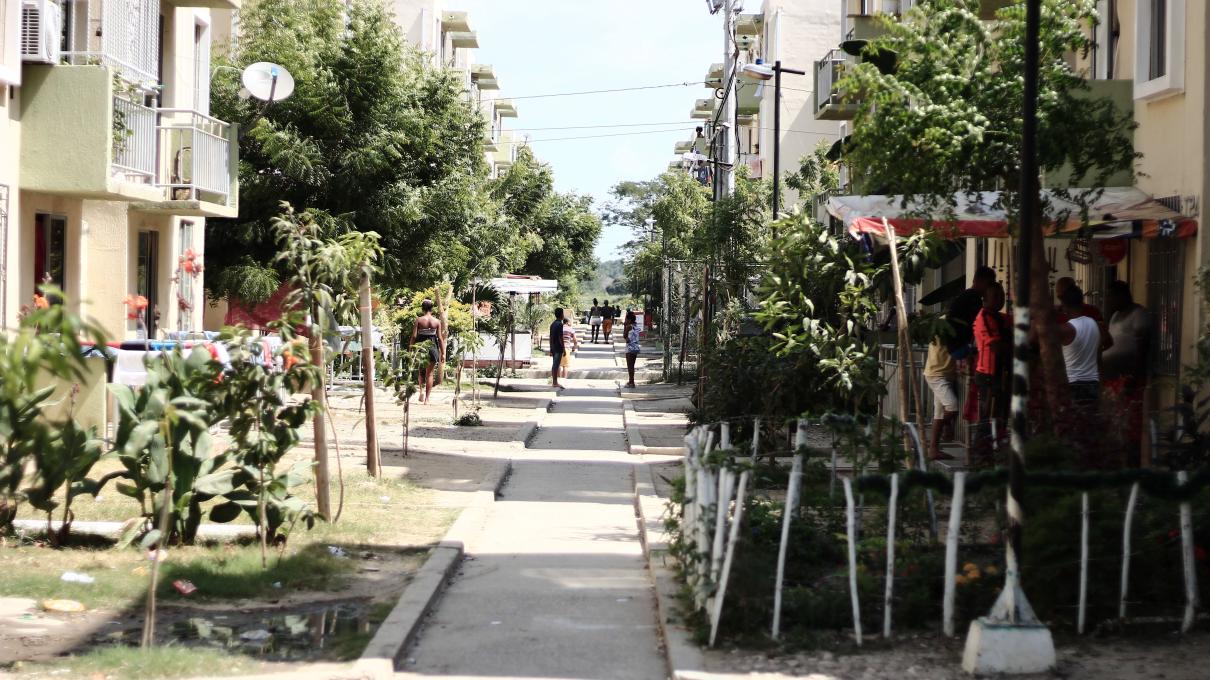A New Neighborhood: Livelihood based approach to the idea of home

The DINCS model as expressed in Villas San Pablo, Barranquilla and Ciudad Bicentario, Cartagena created residential communities with an array of needed supportive services. The desire by FMSD to create "habitats" rather than the typical housing developments is evident and commendable. Residents have started to expand their interior space and some have created commercial enterprises in their front porch areas. The entrepreneurial spirit is alive and well for those who have the financial means and energy to change their environments. The existing housing is constrained by economics and very explicit in the use of space, leaving little room for added activities. Reconfiguring the houses is expensive, time consuming, and beyond most residents’ capacity.
Work is not currently part of the DINCS model although some residents find local employment and work opportunities in the surrounding communities. The desire to supplement incomes is normal through secondary economic activities or micro-projects. Additional job creating opportunities on site could give some households an economic leg up, and for those who may be renters the possibility of entering a "rent to buy option" where work is the route to home ownership. Provision of common spaces such as workshops (FabLabs) where residents could learn new skills, be creative, and create sellable products would contribute to the local economy.
This research will explore these issues and others through the design of alternatives for a neighborhood using a typical super-block in the master plan for Ciudad Bicentario. The assumption is that 300 houses with community facilities is the basic program. We will use the local codes, and economic constraints that currently exist and will test the idea of a pre-fabricated construction system that could save time and costs for most of the structures.


